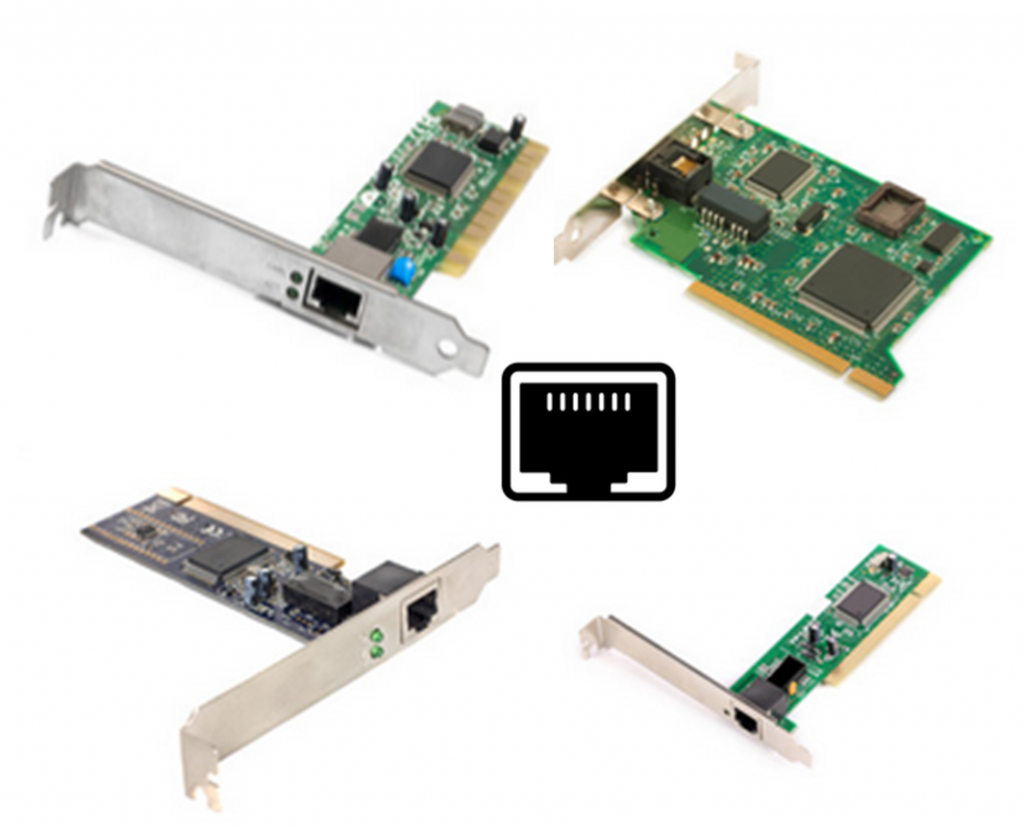NIC Card and Ethernet Protocol
A Network Interface Card (NIC) is also called an Ethernet card. It is also called a network adapter. It is a circuit board that is installed in a computer so that it can be connected to a network. A network interface card provides the computer with a dedicated, full-time connection to a network. Personal computers and workstations on a local area network typically contain a network interface card specifically designed for the LAN transmission technology. Most new computers have a network interface built in directly into the motherboard. A Network Interface Card enables a computer to connect to a network, such as a home network or the Internet, using an Ethernet cable with an RJ-45 connector and wires.
Types of Network Interface
There is a different form of the network card. But the two main ones are wired and wireless. Wireless NICs Use wireless technologies to connect the network, so they have one or more antennas. Wired NICs just use an RJ45 port since they have an Ethernet cable attached to the end. This makes them much flatter than wireless network cards.
Speed of Network Interface Card (NIC)
All network interface cards have different speed ratings, such as 10 Mbps, 11 Mbps, 54 Mbps or 100 Mbps, and 1000 Mbps. The speed describes the general performance of the interface card. The speed of the NIC mustn’t necessarily determine the speed of the internet connection. This is due to available bandwidth and the speed you’re paying for. For example, if your DSL speed is 16 Mbps and your NIC Speed is 100 Mbps, the network interface card will not increase your internet speed. However, if your DSL speed is 16 Mbps and your NIC is 10 Mbps, your internet speed will also slow down to 10 Mbps.
Network Interface Card Driver
All hardware devices installed in computers need device drivers to work with the software on the computer. If the installed network card isn’t working, the driver is missing, corrupted or outdated. The updating of driver software is required for an internet connection to download the driver. But the problem is that your network card is not working and you cannot access the internet. So you can download a driver from the card manufacturer’s site to a computer connected to the internet and then transfer it using a USB drive or CD.
Ethernet
Ethernet is both a data link and the physical layer main component for local area networks (LANs). Robert Metcalfe and D.R. Boggs invented it in 1972. Ethernet is a network protocol that controls how data is transmitted over a LAN. Technically, it is referred to as the IEEE 802.3 protocol. It is also used in contrast with WAN, which spans larger geographical areas.
The Ethernet protocol standards describe many aspects of network communication, such as frame format, frame size, timing, and encoding. They tell how networked devices can format data for transmission to other network devices on the same network segment and how to send that data over the network connection.
It is a contention-based method of networking. A contention-based method means that any device can try to send data across the shared medium when it has data to send. The Carrier Sense Multiple Access/Collision Detection (CSMA/CD) process is used in half-duplex Ethernet LANs to detect and resolve collisions. Today’s Ethernet LANs use full-duplex switches, allowing multiple devices to send and receive simultaneously without collisions.
The OSI model describes the data link layer function and the physical standards of the media. The Ethernet standard defines the Layer 2 protocols and the Layer 1 technologies. According to specification, It supports different media, bandwidths, and other Layer 1 and 2 variations. The basic frame format and address scheme are the same for all types of Ethernet.

